A Rare Breed: The Lesser-Spotted Black Male Teacher

Written by Adrian McLean
Education leader | Former Headteacher | Governors for Schools Trustee | Positive Disruptor
Diversity and equity is something that anyone reading this, I am sure wholeheartedly believes in, visualises and works towards creating in our education system and society. I am an advocate of all of the protected characteristics, and work to challenge the systemic prejudices we all face. My views are through the lens and experiences of a Black male in the English education system. For clarity, when I refer to Black in this blog, I am specifically talking about my Black Caribbean and my government defined White/Black Caribbean heritage. This blog shares some thoughts and musings on why there are so few Black male teachers.
Firstly, we need to examine some statistics to understand how stark the reality is. The latest School Workforce data statistics (2019) show there are approximately 500,000 teachers in England. Using my Black Caribbean descendancy as a marker, the stats say there are 4889 teachers who identified in this category. Using the more accurate descriptor for my background – White/Black Caribbean- this figure comes in at 1741!
When interrogating further, there is no breakdown of how these figures are then represented by gender. What I can tell you from the data provided, is there are approximately 379,000 female teachers compared to 121,000 male teachers. 4889 Black Caribbean teachers… 1740 other White/Black Caribbean teachers… 6630 (quick maths!) people who identified as appearing similar to me, of a population of 500,000 across 23,323 schools? Additionally, that figure represents both male and females! What? Really? I am not a genius, however, it points to the probability of there being very few male Black Caribbean or White/Black Caribbean teachers. Couple this with my 20 year career in West Midlands schools where I have worked alongside less than a handful of males who look like me.
If you have heard me speak, you will have heard me talk about the importance of visible role models to our young people and ‘usualising’ the presence of all people from protected characteristics in positions of authority. Representation matters. It matters to all children! My #DiverseEd Pledge from 14/06/2020 is to continue to help, support and grow the number of Black males (from all denominations of Black) in teaching and Senior Leadership. However, 7 months on, the realisation struck me… are we treating the symptom rather than the cause?
The London Development Agency commissioned a study (2004) on the educational experiences and achievements of Black boys in London schools 2000-2003, the authors of the report called for an increase in the proportion of ‘Black Minority Ethnic teachers within the educational system’. Logically, this makes sense… except right now, this is, in my opinion, a pipedream. Let me explain my theory. The experience of Black Caribbean and White/Black Caribbean male students in school is well documented. We all know about the vast over-representation of these young men in being permanently excluded (latest figures are 0.25 and 0.24%, respectively) are only exceeded by students from a Gypsy Roma background (0.27% which is also a travesty!). To me, it is obvious that the lack of Black Caribbean and White/Black Caribbean males in the profession directly correlates to the negative school experience countless reports and reviews have revealed. It is part of one big negative cycle which drives Black males away from education.
From Bernard Coard’s (1971) study of how the British education system failed Black boys or the government sponsored Rampton Report (1981), which recognised the existence of racism in the British education system, through to the work of Maud Blair (2001), is that a high proportion of Black boys find their educational experience to be negative. All of these studies’ findings were perfectly brought to life in Small Axe: Education by Steve McQueen, where he made the audience feel the very real process of placing Black Caribbean children into special schools because they were disruptive or had not scored well on a ‘I.Q. test’. Education has been doing the same thing for 50 years. I’ll say that again… FIFTY YEARS! Einstein said the definition of insanity is doing the same thing over and over again and expecting different results.
Ofsted (1999) stated Black boys in primary school achieved close to the average on entry to secondary school. However, by the end of year eleven they became amongst the lowest achievers. This mirrors my own experience at secondary school… labelled with low expectations, despite being smarter than your average. Frustratingly, we are still no further along a quarter of a century later! So what changes? Is 11 the age when Black males transform from being capable, engaged students, into troublesome tyrants? Or are other factors at play?
Trying to specifically recruit more Black male teachers is going to be difficult when the school, and education experience is, on the whole, not a pleasant one for this demographic. When I ask my school friends and acquaintances about school, they tell me it was the worst time of their life. They didn’t fit. Told they were trouble. Told they were stupid. Labelled. Written off. Put in their place. They say ‘Why would I want to be anywhere near a system that does that to our people?’ The roles offered in schools to this demographic are stereotypically of a pastoral nature. Roles that often leave you helpless in being able to help those you set out to.
You may ask, well how do we improve the educational experience for these young people? There are many tributaries that are required to come together to form the ocean that is Diversity and Equity. Diversifying the curriculum, real measures being put in place to address socio-economic disadvantage, acknowledgement and extensive work on unconscious bias to address misconceptions of behaviour and attitude issues. Work with our communities around toxic masculinity, a stereotype that is persistently put forward and perpetuated in Black communities. This is not an exclusive list, there are many more tributaries that also flow into the mix.
My Jamaican grandfather would always say “Heel nevah go before toe”, and as usual, his wisdom seems apt in this situation. For us to be able to walk tall and true, we must place the heel first (school experience) before we place the toe (more Black male teachers in the profession). Improve the school experience, the perception of education for Black males will change. Once the perception changes, education becomes an opportunity rather than a threat. The realisation of that opportunity is what I believe will be the change I, and so many others, so passionately work to see.
On that note, I will leave you with 2, some may say rhetorical questions, and a third to ponder more deeply:
Are we trying to treat the symptom rather than the cause?
Do we need to remedy the experience of school for these young people to break the cycle?
How can you be part of influencing this change?
References:
Blair, M. (2001), Why Pick on Me? School Exclusion and Black Youth, Stoke on Trent, Trentham.
Coard, B. (1971), How the West Indian Child is made educationally subnormal in the British school system: the scandal of the Black child in schools in Britain, London, New Beacon for the Caribbean Education and Community Workers Association.
London Development Agency, (2004), The Educational Experiences and Achievements of Black Boys in London Schools, London, LDA.
OfSTED, (1999), Raising the Attainment of Minority Ethnic pupils, London, Ofsted publications.
Rampton, A. (1981), West Indian children in our schools: interim report of the Committee of inquiry into the education of children from ethnic minority groups, London, HMSO.
School Workforce In England, Reporting Year 2019. [online] Available at: <https://explore-education-statistics.service.gov.uk/find-statistics/school-workforce-in-england> [Accessed 16 January 2021].
Understanding and Challenging Microaggressions

Written by Nasreen D'Agostino
Youth Education Officer, EqualiTeach
“You Don’t LOOK Like You’re Gay!”: Understanding and Challenging Microaggressions.
Although the term ‘microaggressions’ has been around for some time, it is emerging more regularly in conversations as people increase their efforts to engage in discussions surrounding bias and privilege as a result of movements such as Black Lives Matter. Therefore, it seems more pertinent than ever to understand what this word really means and the harm that microaggressions can cause.
What is a Microaggression?
The term “microaggression” has been defined by Columbia professor Dr Sue to refer to,
“brief and commonplace daily verbal, behavioural, or environmental indignities, whether intentional or unintentional, that communicate hostile, derogatory, or negative racial slights and insults toward people of color.” (Sue DW, et al., (2007).
In other words, microaggressions are remarks, questions and actions which are based on assumptions about marginalised groups. Microaggressions can be based on many aspects of someone’s identity, including gender, age, sexual orientation, disability, religion and race. They can be masked as compliments but are often laced with negative undertones. They can be experienced at work, school, whilst shopping, receiving health care and even at the dinner table among family members. Microaggressions can ignite feelings of alienation, hurt and frustration in those who experience them because they are so frequently and casually deployed.
Microaggressions can be packaged in such a subtle way that they can be seen as innocuous, and dismissed as less harmful than more overt acts of prejudice. However, microaggressions are founded upon a the very same set of generalisations and assumptions that underpin overt acts. For example, saying to someone ‘you don’t look like you’re gay!’ is linked to assumptions about Lesbian, gay and bisexual people and an idea that there is only one ‘set way’ of being gay. People who express microaggressions are not necessarily doing so with bad intent, but that is not a get out of jail free card. It is important to accept that microaggressions are harmful, to interrogate underlying biases and to explore how they can influence attitudes and behaviours towards marginalised groups or individuals.
What are some common microaggressions that people face?
Let’s look at five common microaggressions and examine the assumptions and stereotypes they perpetuate, and what could be said instead:
1/ To a disabled person: “I think you’re so inspiring!”
🗶 This can be patronising. Disabled people do not need to be uplifted, validated or given constant reassurances.
✔ Say nothing! Treat disabled people with the same dignity and respect you would treat non-disabled people and that is all that’s needed.
2/ To people of colour: “Where are you actually from?”
🗶 This can seem like an innocent question but when consistently asked to people of colour it is a constant reminder that you are not accepted as being really British by your white counterparts. This can make people feel othered and as though they do not belong.
✔ People may wish to share their heritage at a time that is appropriate and when they feel comfortable to do so. Everyone has a history and family background to share, so consider who is being asked the question and why it’s being asked.
3/ To someone with a ‘foreign’ name: “Don’t you have a nickname, I’m never going to remember that”
🗶 This is extremely damaging, especially when directed at young people. Since so much of our identity is wrapped up in our names, having this stripped away is extremely hurtful.
✔ Always take the time to learn how to pronounce new names. Write names down phonetically if you are finding a name particularly hard to remember or pronounce.
4/ To a female colleague: “You look so young!”
🗶 Not only can this undermine your colleague’s authority, but it also assumes that the most desirable characteristics a woman can have are those linked to her appearance, rather than those linked to her skills and character – in a professional setting this is particularly damaging.
✔ It is fine to compliment someone’s skills or ideas but refrain from commenting on looks as this is very personal.
5/ To people of colour: “You’re really articulate!”
🗶 This comment implies that most people of colour are not articulate, well-spoken or educated.
✔ It is fine to compliment someone’s skills or ideas but commenting on the way someone speaks is unnecessary.
What are the harms of microaggressions?
Some who are sceptical of the validity of microaggressions claim that it is just people being ‘too sensitive’. However, research has shown that microaggressions, ‘although seemingly small and sometimes innocent offenses, can take a real psychological toll on the mental health of their recipients.’ (Harris, 2015). Microaggressions can make environments seem hostile, thus affecting performance and wellbeing.
They can make people feel:
- Frustrated
- Drained
- Uncomfortable
- ‘Othered’
- Alone
- Angry
- Lesser
- Demoralised
- Unwelcome
- Patronised
No matter how seemingly confident or self-assured someone might be, being subjected to constant assumptions and put downs based on your identity is going to take its toll.
How can I stop expressing microaggressions?
Since microaggressions are expressions of deeply held bias which people can often be blind to, it requires a willingness to reflect and engage to unearth them. With greater understanding and awareness of these biases, people can choose not to act on them. Here are some tips for thwarting microaggressions:
i) Be constantly aware of your biases and scrutinise them. This requires internal reflection and honest conversations with yourself which might make you feel uncomfortable at first.
ii) Stop and think before you comment on an aspect of someone’s identity. Bear in mind that microaggressions are often unnecessary comments which can be easily avoided as they serve no real purpose in conversation.
iii) Don’t say or do things based on assumptions or bias. If you think that your comment or action may perpetuate a stereotype about a certain group of people, then do not act upon this impulse.
iv) Listen and be open if someone calls out your use of a microaggression. A commitment to unlearning microaggressions is a journey, not an overnight process, therefore demonstrating a willingness to increase your understanding and knowledge will benefit you in the long run.
What should I do if I experience or witness microaggressions?
- Ask for clarification as to what was meant –Asking for clarification can help someone to go on their own journey and consider the underlying assumptions and messages in their question, comment or action.
- Share the impact of what has been said/done – help someone to recognise the perspective of the target and the detrimental impact of what has taken place.
- Share your learning – we are all on a journey, speaking to someone about how you have previously got things wrong and the learning that you have undertaken can make the challenge less confrontational and support someone on their own learning journey.
The battle against microaggressions can be extremely draining for the target of incidents. Therefore, it is everybody’s duty to challenge inappropriate comments and behaviours, to reduce that burden, create environments where there are no bystanders and where everyone feels safe, included and supported.
EqualiTeach offer staff training (delivered online via Zoom) on equality, diversity and inclusion, including covering topics such as microaggressions, unconscious bias and privilege. Find out more here or get in touch.
Bibliography:
Sue DW, et al., (2007), Racial microaggressions in everyday life: implications for clinical practice, Abstract).
Harris, (2015), Vox.com, ‘What exactly is a microaggression?’ https://www.vox.com/2015/2/16/8031073/what-are-microaggressions
Kendi, I (2019) How to be an Antiracist. London: Penguin Random House.
Williams, T (2019) Psychology Today: Responding to Microaggressions: Safety First. https://www.psychologytoday.com/us/blog/culturally-speaking/201909/responding-microaggressions-safety-first
Wood, J and Harris, F (2020) Diverse Education: How to Respond to Racial Microaggressions When They Occur. https://diverseeducation.com/article/176397/
Diverse Educators: A Manifesto
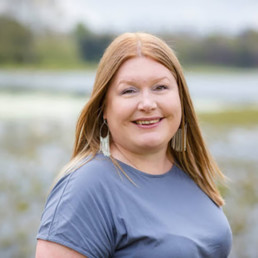
Written by Hannah Wilson
Founder of Diverse Educators
In August 2020, at the end of the first UK lockdown to curb the spread of Covid-19, Bennie and I sat in the sun in my garden, down the road from the school that we had started together a few years previous and we drafted a proposal for a book. We had met through Twitter and #WomenEd 5 years before that, we were both English teachers and secondary school leaders, we are both feminists who are passionate about diversity, equity and inclusion in the school system. When I secured my headship, Bennie applied to my Deputy Headteacher, and led on our values-based curriculum with diversity and equality embedded across it. A regular topic of conversation in the time we worked together was about the books we were reading and the books we were going to write, individually and together. We knew it would happen one day!
Many of you will know that Bennie is the reason Diverse Educators was started, she came to my office one day and shared her frustration with me at having to split herself multiple ways to go to different events each weekend to explore her intersectional identity. I checked my privilege as a heterosexual, cisgender, able-bodied white woman and reflected on this. We discussed the idea of hosting one event and inviting the communities from #WomenEd, #BAMEEd, #LGBTed and #DisabilityEd to come together, at the same time, under one roof to have a joined up conversation about identity. Our inaugural Diverse Educators event was in January 2018, at which #LGBTed officially launched and Bennie closed the grassroots event with a powerful message: ‘Don’t Tuck in Your Labels’.
Fast forward three years and Bennie is now a Deputy Headteacher at an all-through school where she is leading on curriculum and I am working independently as a Leadership Development Consultant, Facilitator and Coach specialising in diversity, equity and inclusion. We launched the Diverse Educators website, with the help of our partners, in the middle of a global pandemic in response to the spotlight on racial inequities, and the amplification of Black Lives Matters, triggered by George Floyd’s murder. At our first virtual event in June 2020, we were joined by over thirteen thousand people.
The world has finally woken up to the need for social justice, society can no longer ignore it and the school system can no longer not prioritise the urgent need to embed the diversity, equity and inclusion agenda strategically into our schools. Bennie has recently published her first book: A Little Guide For Teachers: Diversity in Schools and we are now inviting the #DiverseEd community to lean in and contribute to our book: Diverse Educators: A Manifesto.
Our book will be structured, like our website, around the Equalities Act. There will be ten chapters, one for each of the nine Protected Characteristics (Age; Disability; Gender Reassignment; Pregnancy and Maternity; Marriage and Civil Partnership; Race; Religion and Belief; Sex; Sexual Orientation) with a tenth chapter exploring intersectionality.
Each chapter will have a chapter editor who will work with ten contributors offering a multiplicity of perspectives on the protected characteristic being explored in the chapter. Each submission will be 1200-1500 words long. Each contributor will interweave personal and professional narrative, framed in theory, to respond to current and historic debates. The chapter editor will write the introduction to the chapter to give context and to frame the chapter’s narratives, arguments and provocations.
We are committed to capturing the collective voice of our community and to showcasing the diverse lived experiences of educators. We are keen for Diverse Educators: A Manifesto to be both academic and accessible. You can review the style guide here. We intend for the book to be solutions-focused with high-quality input on practice, pedagogy, people management and policy.
We would love to hear from you if you would like to contribute. You can submit an expression of interest here. Thank you in advance for your time, energy, experience, expertise and support in contributing to our #DiverseEd book, we are looking forward to celebrating the collective commitment and amplifying your voice.
Diversity, Disclosure and Invisibility
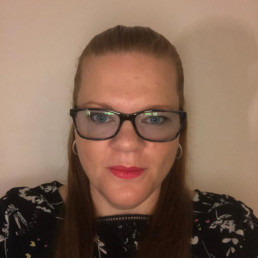
Written by Paula Tankard
Headteacher and has worked as a SIP for local schools
Diversity
Diversity is often referred to in terms of ‘people who look different’. However, not all diversity is visible. This think piece is about a different side to diversity, one that is less visible. I believe that more conversations about diversity and inclusion have happened in schools in the past term than ever before – and this is great. People know more about the Equality Act (2010) and are implementing the recommendations. Many educators can name all of the protected characteristics listed in the act. There are nine, and it is against the law to discriminate against someone because of:
Marriage And Civil Partnership
I am a teacher and headteacher and I also happen to be gay. When a protected characteristic is visible you don’t have to include this in your introduction to various stakeholders. However, when your characteristic is invisible there is a disclosure dilemma.
Disclosure
When do I say it when I introduce myself ‘Hello I’m the new headteacher and I’m gay’? Clearly not, so how do I do it? Do I rely on staff room gossip to do the job for me? A casual comment to the ‘right’ person at 8:30am could mean that the whole school knows by playtime. Each time I have done it differently so clearly there is no right or wrong way and it is up to each individual to find a way that works for them. For both of my headteacher roles I told the chair of governors first and then we agreed a plan about when and who I would tell. Then I spoke to the leadership team in the first meeting and they mentioned it to others.
Who do I tell? Do I tell staff but not the parents? Should I tell the children? Some might say ‘well it is none of their business’ and to a certain extent I agree. In both of my headteacher roles it has been left up to me who I want to tell and in both cases the staff were told and as there were staff who were parents so most of the parents were aware but the children were not specifically told. I had an open discussion with the chair of governors about this decision, I explained that in an appropriate situation if a child asked that I would not lie and would talk to the child in an age appropriate manner. When I was class based, I worked for heads who put a clear ban on any staff talking about their life outside of school with any of the stakeholders, there was even a ban on personal photographs visible in classrooms. Other heads have said it is up to individual staff what they want to reveal.
Early in my teaching career I was specifically told by the deputy head that I could not reveal my sexuality to any pupils or parents from the school. This was said because ‘Parents would not want me to be in the classroom when children are changing for PE, as I would see girls in their underwear.’ I did question if they thought being a lesbian was the same as being a paedophile, although this question wasn’t answered and I received an apology, it had still been said. The lasting effect of this statement was a reluctance for me to tell anybody at work who I am.
Invisibility
There are many characteristics that are clearly visible, some that are sometimes visible and some that are completely invisible. So if you have one of the invisible characteristics you have to tell people for them to know.
It has been my experience that leaders and governors have no clear plan on how to manage this. They have perhaps not thought through who and when staff should reveal their invisible protected characteristics to, and are somewhat hesitant to speak to staff about it. This may be because of the fear of offending somebody and being accused of homophobia and I understand that. I would have preferred to have been asked about it before I started work so that we were all clear.
It would have prevented a very awkward situation for me. Before I moved into leadership I taught Year 6, during a PHSE lesson I was asked if I had got married in the holidays, to which I replied yes. The child then asked me was it to a man, or a woman? I was flummoxed. Not by the answer but by – what am I allowed to say? If this has been discussed before it would have prevented my jumbled answer of yes and then me having to go and see the head to explain that I had just ‘outed’ myself to my class.
What now?
I have listened to various facilitators and trainers talk to school staff and leadership teams to say ‘You need to have people who look differently on your SLT, staff or governing body’.
‘You need visible role models for the children in the school from Black, Asian and Minority Ethnic communities’. I do not disagree, and have said the same thing myself. However, I wonder if the focus on ‘look’ means that other protected characteristics are overshadowed?
So I ask that when you discuss diversity in school, during assemblies, staff meetings and governor meetings, please talk about people who are different not just about those who look different. Make sure you include all protected characteristics in your presentation and discussion.
As leaders have a plan to support staff with invisible protected characteristics. Talk to them, guide them with their inevitable disclosure dilemmas and support their decisions.
Why Decolonise the Curriculum?

Written by Nuzhat Uthmani
Primary Teacher specialising in Global Citizenship and Antiracist education
I posed a survey through @Scotedpolls recently in which 25% of respondents said they did not feel they needed to decolonise the curriculum. Despite the majority of respondents expressing an interest in learning more, this statistic stuck with me. Is it because educators don’t understand what the term means or is it because they don’t see that there is an inherent problem with our curriculum? Let me address both these possibilities.
This time last year, even I had not heard of this term. Lockdown allowed me the freedom to invest in my own professional development and, as an advocate of global citizenship, I learnt more about decolonising the curriculum and its impact on the education system.
Traditionally, much of our curriculum is framed around the successes of the British Empire. It fails to acknowledge the contribution of communities and nations without which the empire would not have been as successful or wealthy as it once was. The stories of what those nations sacrificed as a result has been hidden away for centuries. Decolonising the curriculum refers to the inclusion of those stories, characters and contributions of others around the world that has impacted on the lives that we live today.
The Black Lives Matter movement is seeking to do this by raising awareness of how the UK gained from the slave trade while committing human rights abuses on those communities. However, as educators we must be mindful of not promoting a stereotypical view of certain groups. When we teach about slavery, we should be mindful to also teach about the contribution of Black, Asian and Ethnic Minorities to Science, the Arts and Politics for example.
I’m on a mission now to embed diversity across all the curriculum. It does not mean scrapping everything we know and teaching new topics, instead it involves a mind-shift from educators, ensuring the inclusion of diverse examples and resources in their daily teaching. It means ensuring that one narrative doesn’t dominate out curriculum but a diversity of perspectives and experiences are represented.
So, what about those in our community who feel nothing needs to change? My question to those is how inclusive is your practice? Holding standalone themed weeks is a box ticking exercise we need to move away from and embrace diversity in all that we do. If you rarely use books with characters of colour, if you only use examples from the Western world, then that is not inclusive to those learners who never see their heritage valued within the classroom, so please think again.
If you want to learn more please check my blog on Global Citizenship Education for lesson plans, research, and links to a variety of organisations who are all working towards establishing anti-racist education and can help you get started on your journey to offering a more inclusive and diverse curriculum.
Interactive Diversity Calendar 2021

Written by Dual Frequency
Dual Frequency is a teaching resource provider that seeks to promote dialogue in relation to inclusion
This December, Dual Frequency is thrilled to share with you a brand new interactive diversity calendar that can be used in schools, education settings and other organisations to ensure you never miss a significant date in the EDI calendar.
Why is the diversity calendar important?
Because diversity matters, every single day! The more we immerse ourselves in diverse groups, the more we will be able to celebrate positive representation of these groups, and the richer our communities become.
How can you implement the diversity calendar within your organisation?
The diversity calendar includes a mixture of equality, diversity and inclusion related events along with key dates. This is not intended as an exhaustive list. At a glance you can see the key dates that are listed each month, click the date to be signposted to a resource and more information, plus suggestions of how you can celebrate the date.
How does the colour code in the diversity calendar 2021 work?
The calendar is colour coded to the strands of the Equality Act 2010. It is important to value everybody’s contribution to society all year round: far too many communities are so regularly overlooked in the Gregorian calendar. By focusing on the protected characteristics that fall under the Equality Act, our hope is these communities will no longer be overlooked but celebrated in contrast.
If you require the calendar in a different format, such as large text or on an (accessible) yellow background, then let us know and we will do our best to meet your requirements.
How do I get my calendar?
Download yours right now by clicking this link: https://www.dualfrequency.co.uk/diversity-and-inclusion-calendar-2021
If you are in a position to make a donation for your calendar, then we appreciate this. It helps to keep a grassroots organisation like Dual Frequency running and makes a huge difference to our community fund which ensures we can pay our contributors for their time and efforts.
Lest We Forget
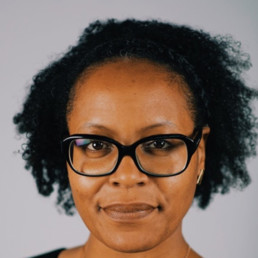
Written by Angie Browne
Education leader and founder of Nourished Collective. Author of Lighting the Way: The Case for Ethical Leadership in Schools
I have been busier than ever lately, which is a great problem to have, but as I was explaining to a group of school leaders this week, it’s also a sobering problem to have. Sobering because most of my work comes from supporting organisations who are embracing Diversity, Equity and Inclusion in the wake of the murder of George Floyd on May 25th 2020 in Minneapolis, Minnesota.
As I am going about my work, a refrain that repeats itself over and over is ‘lest we forget’. For most of us, ‘lest we forget’ has come to have meaning through commemorative war services, services honouring soldiers that have fought and died. However, the phrase, with biblical roots, is generally attributed to Rudyard Kipling’s usage in his poem ‘Recessional’.
It seems curious to have landed on this phrase, used to celebrate British imperial power and rue its demise by Kipling. Curious because I now use it with such de-colonising intent. But, the mind does strange things and perhaps, because I am an English teacher, I so often find myself with fragments of phrases echoing about the chamber of my mind with no direct realisation of the connections being made in there, the relevance to events past and present.
Inheritance, legacy and leaving the world in better shape than I found it are such important concepts for me. I feel grateful to my ancestors daily, seek to be a good ancestor as much as I can and work in ways that allow me to live out an ambition of leaving behind something ‘good’.
I cannot read ‘Dulce et Decorum Est’ without it bringing a lump to my throat. Who is not haunted by the final lines of the poem? Every single time I taught this poem the urgency of English teaching, of education and of creating a world in which our young were not sent to senseless deaths stirred me.
If you could hear, at every jolt, the blood
Come gargling from the froth-corrupted lungs,
Obscene as cancer, bitter as the cud
Of vile, incurable sores on innocent tongues,—
My friend, you would not tell with such high zest
To children ardent for some desperate glory,
The old Lie: Dulce et decorum est
Pro patria mori.
Who among us is not moved by the futility of youthful death articulated in Brooke’s ‘The Soldier’. With a boy of my own now, with young male cousins and nephews galore, imagining a past in which they were sent to a far off end is heart-breaking, and the urgency of creating a better future feels ever more important.
If I should die, think only this of me:
That there’s some corner of a foreign field
That is forever England. There shall be
In that rich earth a richer dust concealed;
A dust whom England bore, shaped, made aware,
Gave, once, her flowers to love, her ways to roam;
A body of England’s, breathing English air,
Washed by the rivers, blest by suns of home.
‘Lest we forget’ comes to me when I deliver Diversity, Equity and Inclusion work because we must not keep churning out the mistakes of the past, we must not forget those that have died in senseless circumstances.
‘Lest we forget’ means that I punctuate my work with the people and the places of those whose lives we commemorate as we learn about the limitations of our humanity and commit to doing better. It means that we remember Stephen Lawrence, the black British teenager who was murdered on April 22nd 1993 in a knife attack in London by a group of his contemporaries. It means that we recognise a bus stop in Eltham, a small corner of South-East London where lies a richer meaning, a responsibility we all have to do better.
As educators the detail about Stephen Lawrence and the boys who murdered him are essential. On the day of Lawrence’s murder he had been at school, his murderers were also of school age. It is vital to my work that we anchor details like this and not allow ourselves the get-out clause of distant proximity, of hazy memory, of foggy facts. Not allow this to obscure the urgency of the work we all know we need to undertake. Work that will ensure that no teenager dies alone at a bus stop, no teenager leaves our school gates and commits such a heinous and hate-filled crime.
‘Lest we forget’ means we remember Bijan Ebrahimi, a disabled Iranian refugee murdered in Bristol on the July 14th 2013 by a man called Lee James. Lee James had been, but a 17-year-old boy when the hate-fuelled campaign against Ebrahimi had begun. Let’s not shy away from the detail and let’s be clear on the facts. Ebrahimi was beaten, dragged into the street and set alight to by a mob who had lost their minds. There is a corner of a street in Bristol where lies a richer meaning, a responsibility we all have to do better.
‘Lest we forget’ means we anchor our work to a deeper purpose. We commit to the individuals whose deaths should make for a future in which it never happens again. In the ambition, the scope, the reach of the work we engage in to tackle homophobic, transphobic and biphobic behaviour we remember Ian Baynham. We say his name. We compute the detail of the brutal attack of a 62-year-old gay man on September 25th 2009 in Trafalgar Square. We acknowledge that his attackers were of school-age at the time of the attack that led to his death. We commemorate his life in a small corner of Trafalgar Square, acknowledging a richer meaning, a responsibility we all have to do better.
At the heart of Diversity, Equity and Inclusion work for me is a desire to be respectful enough to know who we remember and why. At a personal level, it’s about a past that stretches way back to times when my ancestors were enslaved, put on boats and then brutally put to work, my responsibility to them is to make the absolute most of my liberation. At a societal level, it’s about saying the names of the people who have given their lives needlessly, and collectively understanding what we want and need to do differently to create the kind of society we are all proud of. At an institutional level, it’s about being bold enough to give the lives of Stephen Lawrence, Bijan Ebrahimi, Ian Baynham and countless others meaning through the ambition of our work, our curriculum, our institutional cultures, our organisational structures and processes.
So, over the coming weeks and months, I urge you not to forget, not to get sloppy about who we remember, why we remember them and what our remembrance means for the future. I encourage you to take care and not slip into the laziness of statements like ‘when all the George Floyd stuff happened’. Remember, with care and attention to the details, the dates, the names and follow that golden thread of careful thought through to its manifestation in precise, detailed and luminary action in your work and your life.
How I recruited a diverse board and why it was important to me
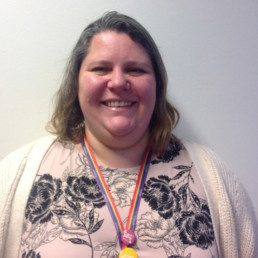
Written by Ninna Makrinov
Organisational Psychologist with over 20 years' experience in Higher Education. Currently the Chair of Governors at Water Mill Primary School.
On 30 September I Tweeted “I have been re-elected chair of governors at Water Mill Primary School. Such a pleasure to be able to serve. I’ve also recruited for all our vacancies and have the most visibly diverse board I have seen in the school this far. Thanks @Penny_Ten for your ideas.”
Here, (in a blog that was first published on the BAMEed website) I articulate why diversity on the board is important to me. And share some ideas that you might want to try when recruiting new members to yours.
A diverse board:
I am chair of governors in a small one form entry primary school in Birmingham. We are extremely proud of the diverse community we serve. It includes children from all over the world, many who arrive to school without speaking English. Because of our location near the University of Birmingham and Queen Elizabeth hospital, some of our children are only with us during their parent’s studies or work placements. When visiting the school, I see this fantastic diversity. And the children see it too! In our latest Ofsted report, the inspector quoted a child saying ‘We are all unique and great friends from different countries. We are like the united nations here’. We also have children who live permanently in the local area; they also come from diverse backgrounds.
Leadership has historically been another matter. When I joined the board we were all white; I brought some diversity, as I immigrated to the UK (for the second time) with my children and they joined the school with still little English. I did not question the lack of diversity then. It seemed the norm, educated white British people providing a service for the community. We cared, we wanted the best for the children. But we (or at least I) did not see how important it was the diversity of our community was visibly represented within the board.
I have been through a personal journey during the past 4 years that totally changed my focus. For years I have believed in multiculturalism, I have worked in international education, I have lived in three countries. Looking back, I was rather naïve in my beliefs. Maybe because in Chile, where I come from, racism is blatant I did not see it in the UK. I started attending an anti-racist pedagogies forum at work a couple of years ago, that changed my outlook. I will not delve into my process, I imagine it would bore a diverse audience to read about how I realised about my white privilege. I should have known!
Having a visibly diverse board is important to me because I realise I cannot serve a community I don’t understand. All voices need to be heard and mine is not more important than others. Our children will be able to see themselves in us, parents might trust us more. Our discussions will, I expect, be enriched by asking questions coming from different perspectives. I hope that recruiting a visibly diverse board is a starting point to diversifying our leadership, improving our policies and engaging in deep reflection. I genuinely value diversity, I have for some time; but I now know that diversity in leadership doesn’t happen by accident.
Recruiting diverse members:
Recruiting board members for school governance is a challenge in itself. I imagine I am not the only one who at some points has felt that I am begging for members. And we need to make sure we have the right skills set on the table. I know some boards achieve this by having specialised committees and big numbers. At Water Mill, we made a decision that the best governance solution for our school was to have a small board (9 members), with frequent meetings and (almost) no committees. We embarked on a skills development journey using the DfE’s competency framework. And we made a conscious commitment to recruiting diverse members. We also decided not to appoint unless we agreed of the value to the board.
As vacancies arose, we openly indicated that we were looking for diverse members. That was, I am sorry to say, not enough. The reason for this was obvious to me when I was delivering a confidence training session to university students and one of them openly discussed what she called the elephant in the room, all were women from ethnic minority backgrounds. She shared her experiences of discrimination and how she would not apply for a job in a place that was not already diverse, to avoid this. In her eyes, a recruitment pack that mentioned diversity was just saying ‘not for me’. How could we make our obviously white educated board the place for those who were not like us? I got advice on ideas to try and came up with some myself.
I still feel that our current diverse board is serendipitous. Three governors were elected by parents and I found my next door neighbour (and good friend) on Inspiring Governance. However, I hope some of the ideas I tried might help:
- Commit to diversity: Discuss diversity openly in your board. Create a list of the characteristics you ideally would want to have. Not all diversity if visible, but visible diversity can help demonstrate your commitment openly.
- Celebrate the diversity you already have: Think about how your board and/or school is already diverse. Share this and make it visible. Add diversity stories on webpages, for example. Our headteacher updated our webpage recently; I think it looks great.
- Ask for what you are looking for: Although I mentioned above that just adding a diversity statement was not enough, I still think this is needed. Make sure it includes your reasoning; I changed ours from ‘we welcome applications from BME backgrounds” to “We would particularly welcome nominations from parents from diverse ethnic backgrounds. We are committed to the diversity of our school; we would like our governing board membership to demonstrate this.”
- Target specifically for the diversity you need: I used Inspiring Governance and Governors for Schools to support my search (if you have not tried them, do!). Inspiring Governance has a shortlisting system. In this occasion we wanted men and minority members; I did not contact any white women in my search. The vacancies were open to all, but I did not reach out to them.
I am looking forward to continuing this journey. A diverse board is not only about recruitment, but also about retention. This will require us to effectively listen to each other, value diverse opinions, ensure everyone feels like a valued member. I start this year with 4 new members, almost half of my board. We are integrating opportunities to get to know each other and training sessions during our meetings. My main focus is to build each member’s confidence in their role. I will know that I have succeeded when others are ready to step up and take the responsibility of chairing the board. I love my role, but I believe my board is better served by diversity in leadership.
“You Can’t Be What You Can’t See”: Growing Future Leaders in Education
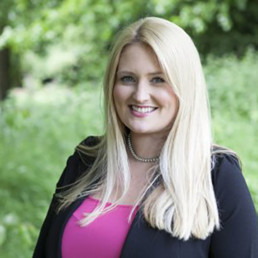
Written by Sarah Mullin
Deputy Headteacher and EdD student
A blog by Sarah Mullin and Dr Deborah Outhwaite
It is widely acknowledged that gender representation, in addition to other forms of diversity, is essential for society to thrive, yet women are still underrepresented globally in politics, health, business, and other organisations. Despite research which highlights the positive influences women bring to leadership positions, many organisations report difficulties in attracting and retaining women leaders. Schools can therefore play an important role in helping girls to realise their potential so that they can be the change that they want to see in society.
How can schools better prepare girls for future leadership positions?
- Engage men as allies
It is important for us to engage boys as allies by raising awareness of gender privileges so that they feel confident to challenge inequality when they see it. We need boys to appreciate the positive qualities that women leaders bring to the table and to work with girls to so that gender equality can be achieved.
- Encourage STEM careers
Just 24% of UK STEM roles are occupied by women and these are wide-ranging, technical professions which are critical to the economy. By harnessing positive role models from organisations such as STEM Ambassadors, we might ignite a passion for future careers in STEM, particularly in young women from households where there is no prior experience in these areas.
- Financial education
Women live longer but financially poorer lives than their male counterparts, and part of this is around the ownership of finances, occupying lower paid, part-time roles, and the lack of professional careers with occupational pensions. Although no one young wants to think about retirement, financial education is key.
- Tackle Imposter Syndrome
For years, girls have outperformed boys academically, yet girls may lack the confidence to believe in themselves and their future potential. We can help girls to be aware that having feelings of self-doubt is normal; imposter syndrome can affect anyone at any time. We can help girls to recognise the positive skills and attributes they possess so that they feel empowered to embrace and celebrate their positive qualities.
- Encourage Self-Care and Wellbeing
We teach our children and young people to take care of their physical and mental health; it is equally important to encourage girls to invest in their wellbeing. Whether schools are promoting positive body image or banishing berating self-talk, girls need to grow up appreciating that self-care is far from selfish: it is a necessity.
- Inspirational Role Models
We can celebrate the multifarious roles that women leaders possess: women can be mothers and partners in addition to being leaders. Let us teach our girls about the possibilities of flexible working patterns, showing them how to be assertive and confident so that they are able to make the future life choices which are right for them. Let us help our girls learn about inspirational women from diverse backgrounds in a range of careers so that they have positive role models to look up to.
For the first time in history, two women shared the 2020 Nobel prize for Chemistry proving that the realisation of a more equitable society is achievable. So, let’s encourage our girls to aim high, dream big and work hard to become the change we want to see in society. After all, you cannot be what you cannot see.
To Cite this article, please use:
Mullin, S. & Outhwaite, D. 2020 ‘You Can’t Be what You Can’t See: Growing Future Leaders in Education’, Engage Magazine, issue 21, p9.
Sarah Mullin is a Deputy Headteacher and Doctor of Education student. She is the curator of the bestselling book What They Didn’t Teach Me on My PGCE and the founder of #EduTeacherTips, a YouTube channel for teachers, by teachers.
Dr Deborah Outhwaite is the Director of the Derby Teaching Schools Alliance (DTSA), BELMAS Council Vice-Chair, co-convening a Research Interest Group (RIG) on Leadership Preparation and Development (LPD and a Network Leader for @WomenEd in the East Midlands.
Wholeness and School Leadership: Why Race and Identity Matter
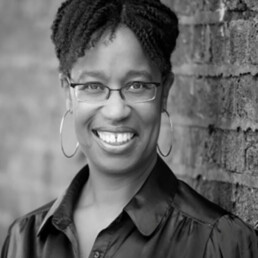
Written by Viv Grant
Director of Integrity Coaching
It is my belief that good school leadership has at its heart a desire for wholeness. It is a wholeness which individuals seek to see manifested through a harmonious interplay of their deepest values and beliefs, by fostering right relationships with themselves and others.
Recent events sparked by the death of George Floyd have clearly illustrated that we live in a society that is far from whole. Fault lines run through the lives of individuals and organisations, teachers and school leaders, families and their children.
We have seen how people have come together to try and repair the damage but there can be no papering over the cracks. For the dream of racial equality to be real, complete healing and transformation is needed.
A gradual dawning
I have witnessed over the past few weeks, that there has been a gradual dawning for many white school leaders of what is being asked of them. This has been a significant paradigm shift. There has been a gradual awakening of the need to review and re-shape white identity in order to accelerate the change that the black community has cried out for.
I recognise and understand that this is unfamiliar territory and can be scary for many. Never before in the UK has the debate on race equality in our schools shifted its gaze so steadfastly onto white identity and race. For as long as I can remember, it has been the other way around. Race equality work has predominantly focused on the black experience of racism and strategies for enabling the black community to overcome the huge injustices and inequalities that they have faced.
Now the narrative has changed. White teachers and school leaders are being called to do their own identity work.
A range of responses
For some, the immediate response has been defensiveness. And yet for others it has been a quiet, studied introspection; a turning inwards accompanied by a deep desire to learn, to enquire, to change, to understand and to grow.
For those who have turned inwards, I am certain that attention to the existential challenge of learning to be whole, will result in, “a net moral gain for all concerned. As that potential grows within us, we join in the potential for personal and social change” (Parker Palmer)
It may seem strange to some that I describe this turning inwards as part of a desire to be whole. Yet as a coach, I have seen the many, many ways in which the school leadership role has caused many leaders to live a divided (and sometimes painful life). Becoming aware of one’s own racial identity and how it has contributed to this can only be an act of service to the greater cause – to a world in which racial equality is a reality for all.
Whole person work
For this to happen, white school leaders need to be supported to see that this is whole person work; work that engages emotions, values and beliefs. It is work that requires them to engage with new personal and professional frontiers. It won’t be easy work, but it will be right work. It won’t come with a National Professional qualification stamp, because the work is ontological. The work is about you.
It will require you to:
- Engage in self-enquiry with an open heart and open mind
- Dig deep and develop greater levels of self-awareness
- Explore your own cultural blind-spots and biases
Essentially, this work will require you to decide how this type of identity work can bring greater agency and potency to your work as a school leader. If you are open and willing, it can bring you to a point where you can say, to be ally in the struggle for greater racial equality my inner truth is:
“The plumb line for the choices I make about my life, about the work I do and how I do it, about the relationships I enter into and how I conduct them”
(Parker J Palmer)
Our society needs to be healed and our schools need to be places of transformation and healing and white identity work has to be a central part of that healing process.

